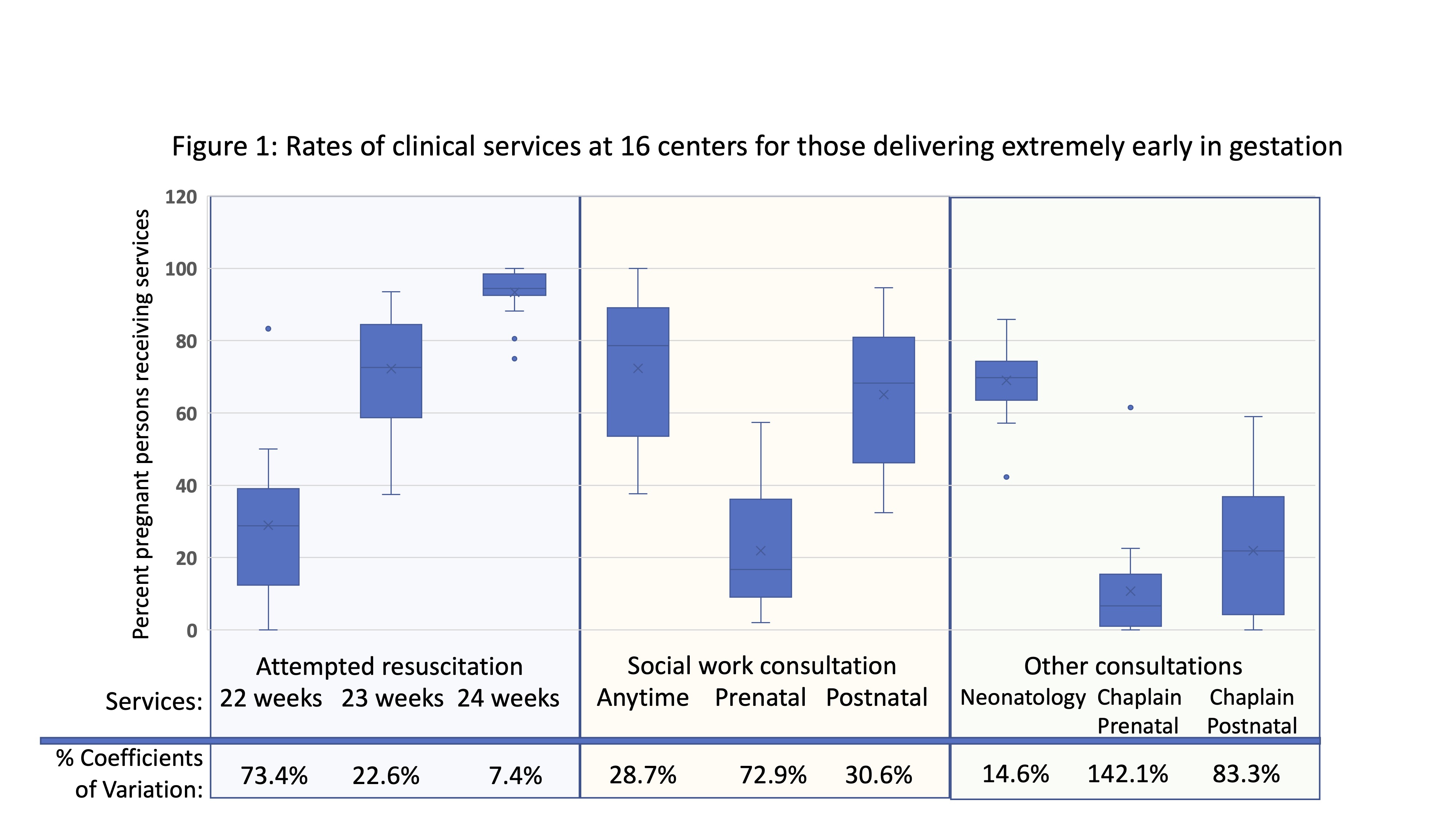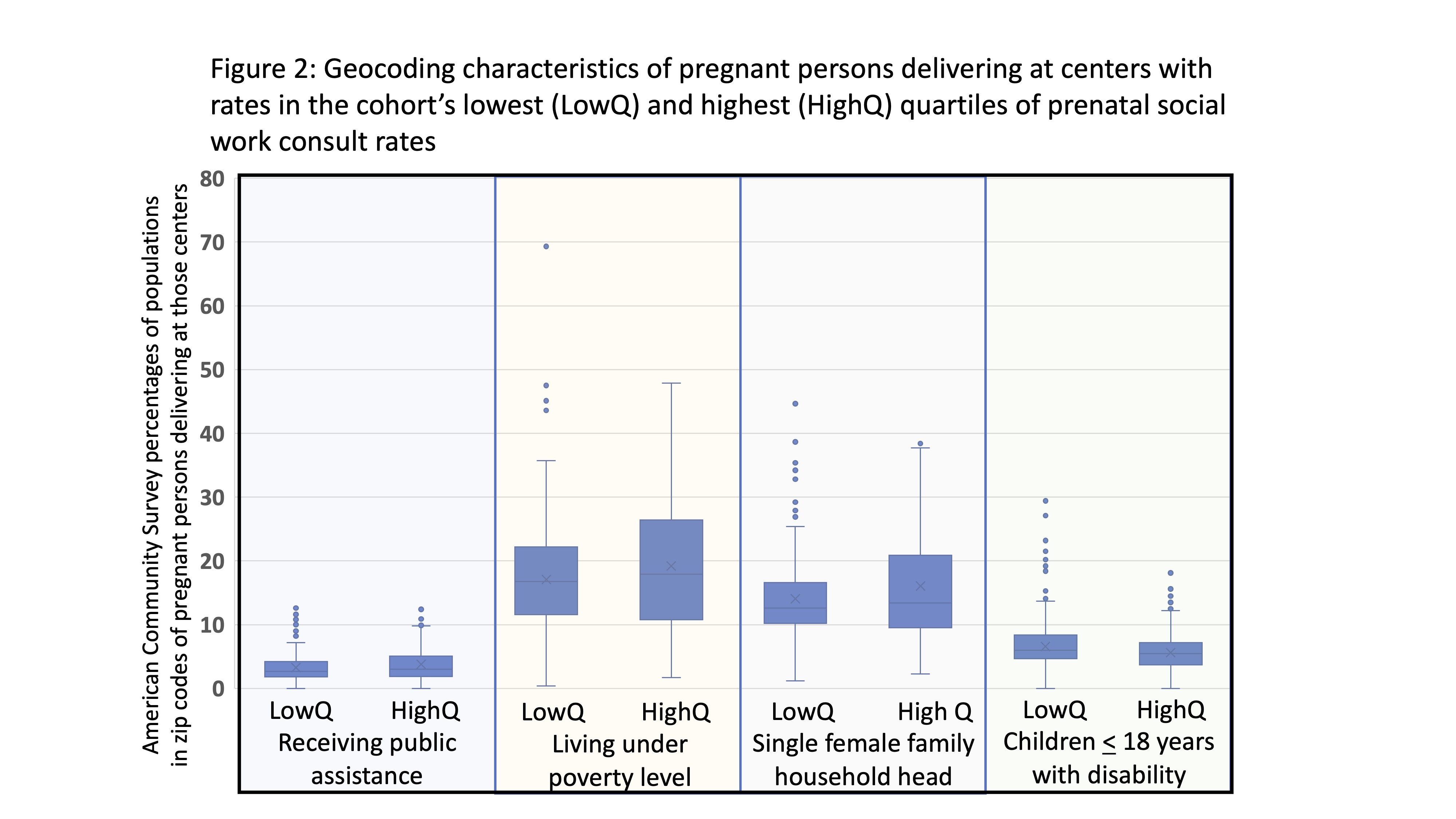Palliative Care
Palliative Care
434 - Parental Decision-Making for Extremely Early Deliveries: Utilization of Prenatal Social Work Consultation
Publication Number: 434.147

Srishti Jayakumar, MD, MPH (she/her/hers)
Fellow, Neonatal-Perinatal Medicine
Johns Hopkins University School of Medicine
Baltimore, Maryland, United States
Presenting Author(s)
Background:
Current guidelines and empiric studies endorse providing emotional and spiritual support to parents facing decisions for newborns born at the lowest gestational ages. Physicians report weakness in these skills but other health professionals, such as social workers and hospital chaplains, are trained in these areas.
Objective:
To describe factors related to perinatal consultative services for pregnant persons (PP) delivering extremely early in gestation
Design/Methods:
This was a multicenter retrospective cohort study comprised of PP and their newborns delivered between 22 0/7 and 24 6/7 weeks gestation. PP data were collected from 16 U.S. centers of the INDEED collaborative group and included all deliveries from 2011 to July 2021 (3 centers had partial years’ data). Each PP’s residential zip code was correlated with social hardship features based on geocoding markers from the American Community Survey. Data for groups that did and did not receive prenatal social work consults (PSWC) were compared using t-tests for continuous variables and Chi tests for categorical variables. Logistic regression analysis assessed the variables found significant in factor-level comparisons for receipt of PSWC. Coefficients of variation (CV) depict the range of rates of delivery centers’ clinical services.
Results:
Table 1 shows PP demographic and clinical characteristics of groups that received (n= 451) and did not receive (n =1710) PSWC. Previous fetal loss, assisted reproduction, race and ethnicity were significant on univariate analyses, but only gestational age at PPs’ admission (p< 0.001) and delivery center (p< 0.001) remained significant in logistic regression. Figure 1 reveals PSWC center rates ranged widely between centers (37.7% to 78.6%, CV 73%) and puts other practice variations in context. Compared with centers with the lowest rates of PSWC, those providing the highest rates of PSWC served PP living in zip code populations with significantly higher rates of public assistance, individuals living under the poverty level and single female heads of family households (p< 0.001 for each; Figure 2).
Conclusion(s):
PP delivering at centers with the highest PSWC rates had significantly higher rates of some geocoded socioeconomic hardship markers. However, PSWC rates varied significantly across delivery centers and were lower when PP presented at lower gestational ages. This suggests opportunities to improve support for complex perinatal decision-making by recognizing that social workers can offer a skill set that complements physicians’ counselling strengths.


.jpg)
